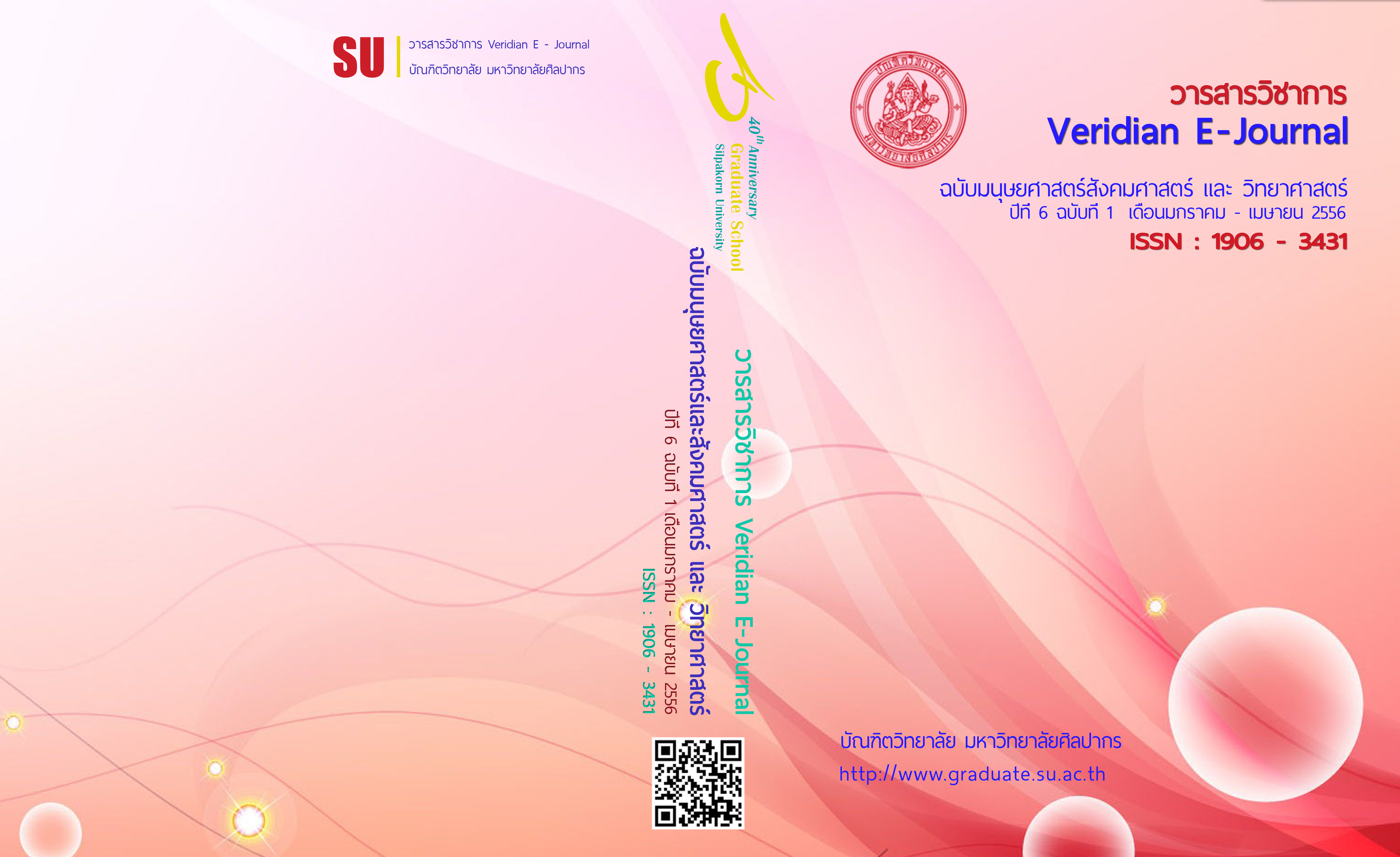พฤติกรรมสุขภาพตามสุขบัญญัติแห่งชาติในนักเรียนชั้นประถมศึกษาปีที่ 4-6 โรงเรียนบ้านร้านตัดผม ตำบลสองพี่น้อง อำเภอท่าแซะ จังหวัดชุมพร
Main Article Content
Abstract
บทคัดย่อ
การวิจัยครั้งนี้มีวัตถุประสงค์เพื่อ 1) ศึกษาพฤติกรรมสุขภาพตามหลักสุขบัญญัติแห่งชาติในนักเรียนชั้นประถมศึกษาปีที่ 4-6 2) เปรียบเทียบพฤติกรรมสุขภาพตามหลักสุขบัญญัติแห่งชาติในนักเรียนชั้นประถมศึกษาปีที่ 4-6 จำแนกตามปัจจัยส่วนบุคคล และ 3) ศึกษาปัจจัยที่มีความสัมพันธ์กับพฤติกรรมสุขภาพตามหลักสุขบัญญัติแห่งชาติในนักเรียนชั้นประถมศึกษาปีที่ 4-6 กลุ่มตัวอย่างที่ใช้ในการวิจัยครั้งนี้คือ นักเรียนชั้นประถมศึกษาปีที่ 4-6 โรงเรียนบ้านร้านตัดผม ตำบลสองพี่น้อง อำเภอท่าแซะ จังหวัดชุมพร จำนวน 125 คน ได้มาจากการสุ่มแบบง่าย เครื่องมือในการเก็บรวบรวมข้อมูล ได้แก่ แบบสอบถาม สถิติที่ใช้ในการวิเคราะห์ข้อมูล คือ ค่าร้อยละ ค่าเฉลี่ย ส่วนเบี่ยงเบนมาตรฐาน การทดสอบที การทดสอบเอฟ การวิเคราะห์ความแปรปรวนทางเดียว และการหาค่าสัมประสิทธิ์สหสัมพันธ์ของเพียร์สัน
ผลการวิจัยพบว่า 1) พฤติกรรมสุขภาพตามหลักสุขบัญญัติแห่งชาติในนักเรียนชั้นประถมศึกษาปีที่ 4-6โดยรวมอยู่ในระดับมาก เมื่อพิจารณาเป็นรายด้านพบว่าด้านที่มีค่าเฉลี่ยมากที่สุดได้แก่ ด้านงดบุหรี่ สารเสพติด การพนัน และการสำส่อนทางเพศ รองลงมาคือ ด้านการดูแลรักษาร่างกาย และของใช้ให้สะอาด และด้านป้องกันอุบัติภัยด้วยความไม่ประมาท มีค่าเฉลี่ยเป็นอันดับสุดท้าย 2) พฤติกรรมสุขภาพตามหลักสุขบัญญัติแห่งชาติในนักเรียนชั้นประถมศึกษาปีที่ 4-6 ที่มีเกี่ยวกับเพศและระดับการศึกษาต่างกันมีพฤติกรรมสุขภาพตามหลักสุขบัญญัติแห่งชาติแตกต่างกัน อย่างมีนัยสำคัญทางสถิติที่ระดับ 0.05 และ 3) ปัจจัยความรู้เกี่ยวกับสุขบัญญัติและปัจจัยแรงสนับสนุนทางสังคมมีความสัมพันธ์กับพฤติกรรมสุขภาพตามหลักสุขบัญญัติแห่งชาติในนักเรียนชั้นประถมศึกษาปีที่ 4-6 โดยรวมมีความสัมพันธ์กันในทิศทางบวก อยู่ในระดับต่ำ อย่างมีนัยสำคัญทางสถิติที่ระดับ 0.05
Abstract
This research aimed to: 1) study Prathomsuksa 4-6 students’ health behaviors according to National Health Commandments, 2) compare health behaviors according to National Health Commandments of Prathomsuksa 4-6 students with different personal factors, and 3) examine factors relating to Prathomsuksa 4-6 students’ health behaviors according to National Health Commandments. The research samples were 125 Prathomsuksa 4-6 students at Banrantadpom School in Songpeenong Subdistrict, Tha Sae District, Chumphon Province, selected by using simple random sampling method. The tool for collecting data was a questionnaire. The data were analyzed by using percentage, mean, standard deviation, t-test, F-test, one-way ANOVA, and Pearson’s correlation coefficient.
The research results were as follow: 1) the Prathomsuksa 4-6 students’ health behaviors according to National Health Commandments were overall at a high level. The aspect of behavior with he highest mean score was the refusal of smoking, narcotic, gambling, and sexual promiscuity, and the behavior on keeping body and stuff clean was secondly ranked, whereas accident prevention with precaution was the aspect with the lowest mean score, 2) the Prathomsuksa 4-6 students with different gender and educational level had different health behaviors according to National Health Commandments with statistical significance at 0.05 level, and 3) knowledge on health commandments and social support positively related to Prathomsuksa 4-6 Students’ health behaviors according to National Health Commandments at a low level with statistical significance at 0.05 level.

